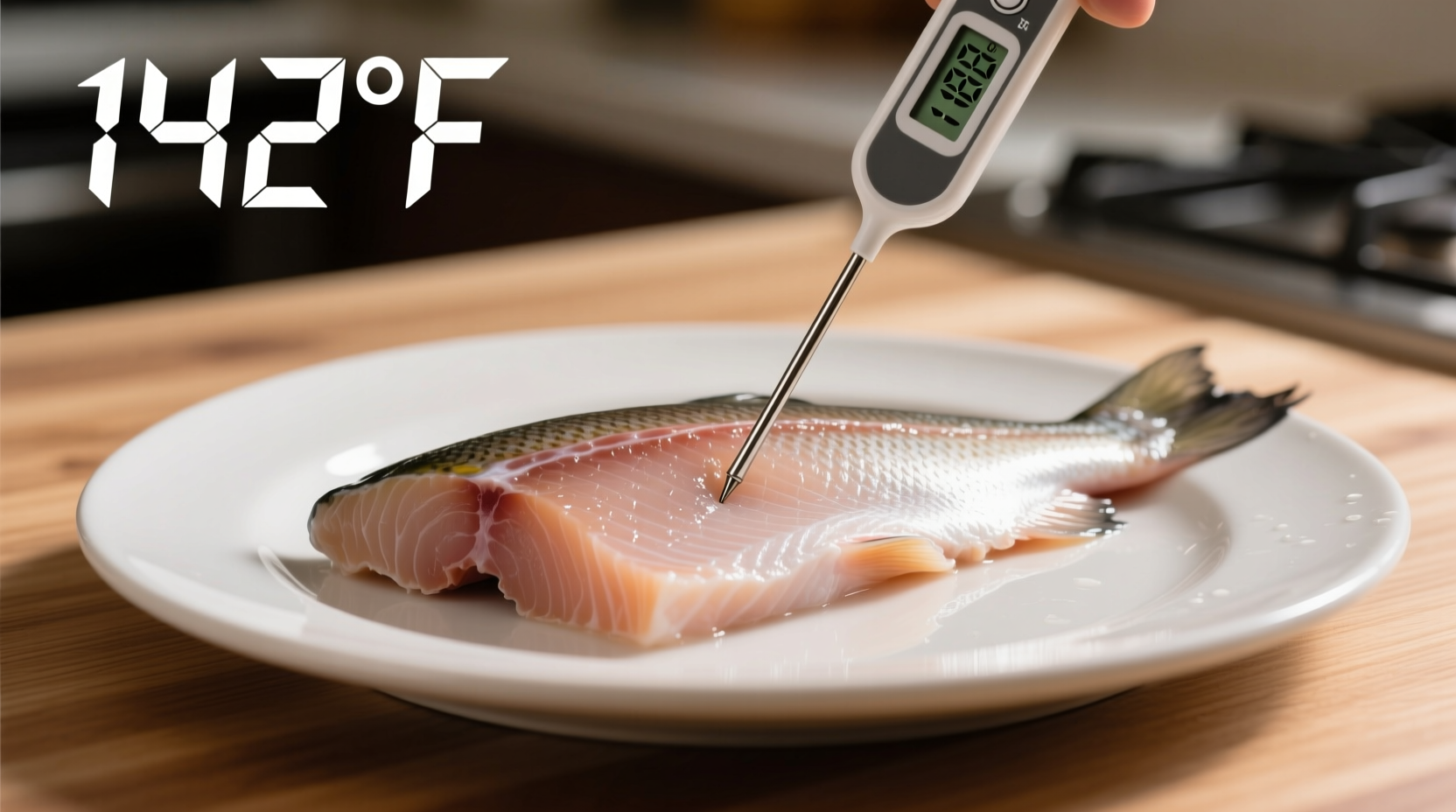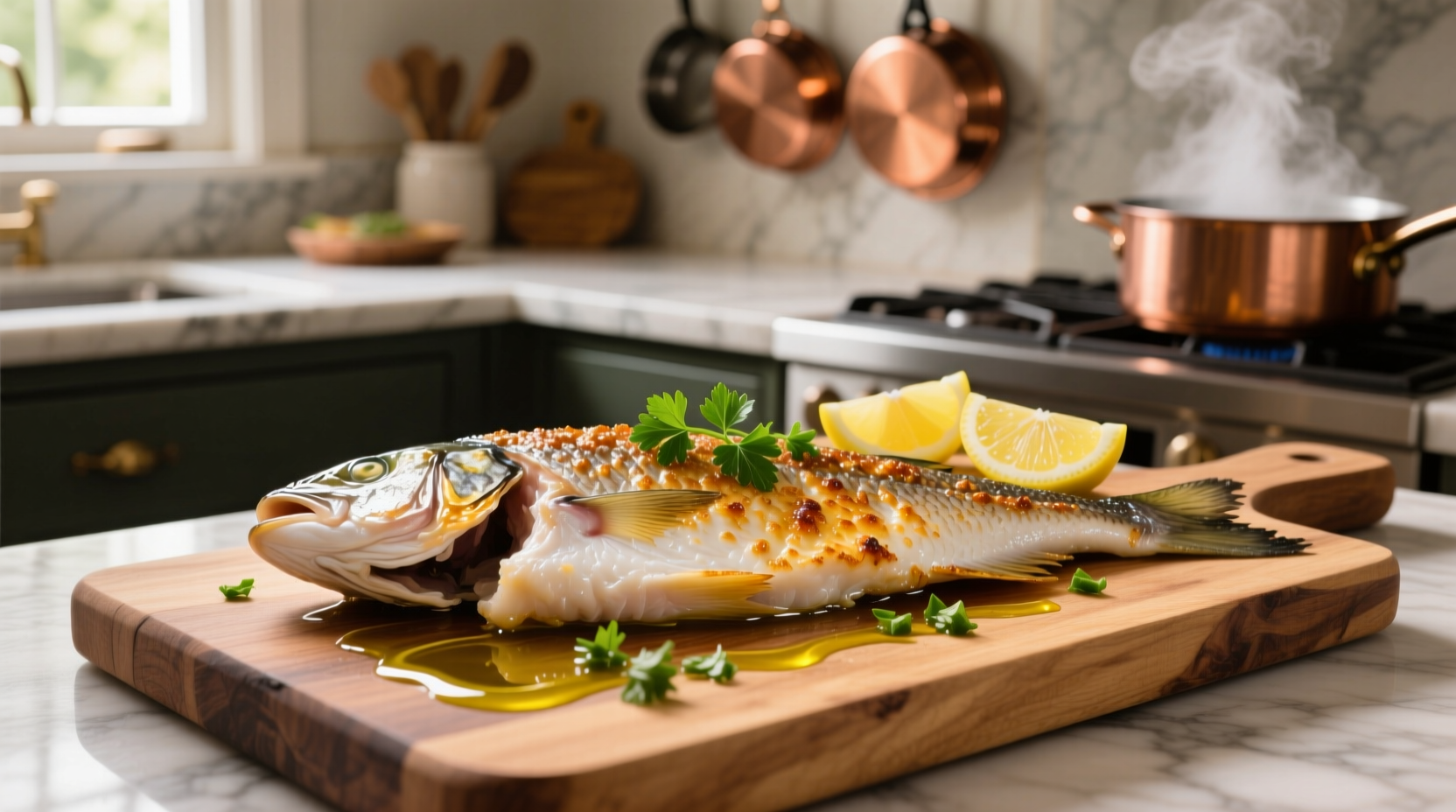Getting the temperature right when cooking tilapia isn't just about food safety—it's the difference between tender, flaky perfection and dry, rubbery disappointment. As a lean white fish with mild flavor, tilapia requires precise temperature control to preserve its delicate texture while eliminating potential foodborne pathogens.
Why 145°F Is the Gold Standard for Tilapia
The U.S. Food and Drug Administration’s Food Code specifies 145°F as the minimum safe internal temperature for all finned fish. At this temperature, tilapia’s flesh turns opaque white, separates easily along natural lines, and harmful bacteria like Listeria and Vibrio are effectively destroyed.
Unlike fattier fish like salmon, tilapia contains minimal oil, making it particularly vulnerable to overcooking. Exceeding 150°F causes rapid moisture loss, resulting in dry, stringy fillets. The narrow 5-degree window between perfectly cooked and overdone makes accurate temperature monitoring essential.
| Fish Type | Recommended Temp | Texture Indicator | Cooking Time (6oz fillet) |
|---|---|---|---|
| Tilapia | 145°F (63°C) | Opaque white, flakes easily | 8-10 minutes |
| Salmon | 125-145°F (52-63°C) | Translucent center to opaque | 12-15 minutes |
| Cod | 140-145°F (60-63°C) | Flaky, pearly white | 10-12 minutes |
Proper Temperature Measurement Technique
Accurate temperature reading requires both the right tool and proper technique:
- Digital instant-read thermometer: Insert horizontally into the thickest part of the fillet, avoiding the pan or plate surface
- Wait 10 seconds: Allow time for the reading to stabilize (most quality thermometers take 5-10 seconds)
- Check multiple spots: Especially with uneven fillets, verify temperature in 2-3 locations
- Account for carryover cooking: Remove tilapia from heat at 140°F as temperature will rise 5 degrees during resting
According to the USDA Food Safety and Inspection Service, improper thermometer placement accounts for 68% of temperature-related cooking errors. Always insert the probe into the center of the thickest section, not near bones or the cooking surface.

Cooking Method Considerations
Different cooking techniques require slight temperature adjustments:
Pan-Searing
Heat oil to 375°F before adding fish. Cook 3-4 minutes per side, checking temperature at 7 minutes. The FDA recommends reducing heat after initial sear to prevent exterior burning before interior reaches 145°F.
Baking
At 400°F, 6-ounce fillets typically reach 145°F in 10-12 minutes. The American Heart Association notes that baking produces 30% less moisture loss than frying, helping maintain tenderness.
Grilling
Direct medium heat (350-400°F) for 4-5 minutes per side. Use a fish basket to prevent sticking, which can cause uneven cooking. Temperature rises faster on grills due to radiant heat, so check early.
When You Don't Have a Thermometer
While a thermometer is ideal, these visual indicators confirm doneness:
- Flesh turns completely opaque white (no translucent areas)
- Fork slides in with little resistance and flakes along natural lines
- Thickest part feels firm but yields slightly to gentle pressure
- Internal juices run clear, not milky
Research from the National Fisheries Institute shows that visual indicators alone lead to undercooking 22% of the time. For vulnerable populations (pregnant women, elderly, immunocompromised), a thermometer remains essential.
Avoiding Common Temperature Mistakes
Professional chefs consistently identify these temperature-related errors:
- Testing too early: Checking temperature within first 5 minutes disrupts cooking process
- Ignoring thickness: 1-inch fillets need 3-4 minutes longer than ¼-inch cutlets
- Resting improperly: Leaving fish in hot pan causes continued cooking beyond 145°F
- Calibration neglect: Thermometers lose accuracy over time—test in ice water monthly
The evolution of fish temperature guidelines reflects improved food safety understanding. Prior to 2005, many sources recommended 140°F for fish. The FDA raised the standard to 145°F after studies showed certain pathogens survived at lower temperatures in lean fish varieties like tilapia.
Serving Temperature Matters Too
For optimal texture and flavor, serve tilapia immediately after reaching 145°F. Temperature drops rapidly—within 5 minutes, it falls below 130°F where texture begins deteriorating. Keep plates warm and minimize plating time to preserve that perfect flaky consistency.











 浙公网安备
33010002000092号
浙公网安备
33010002000092号 浙B2-20120091-4
浙B2-20120091-4